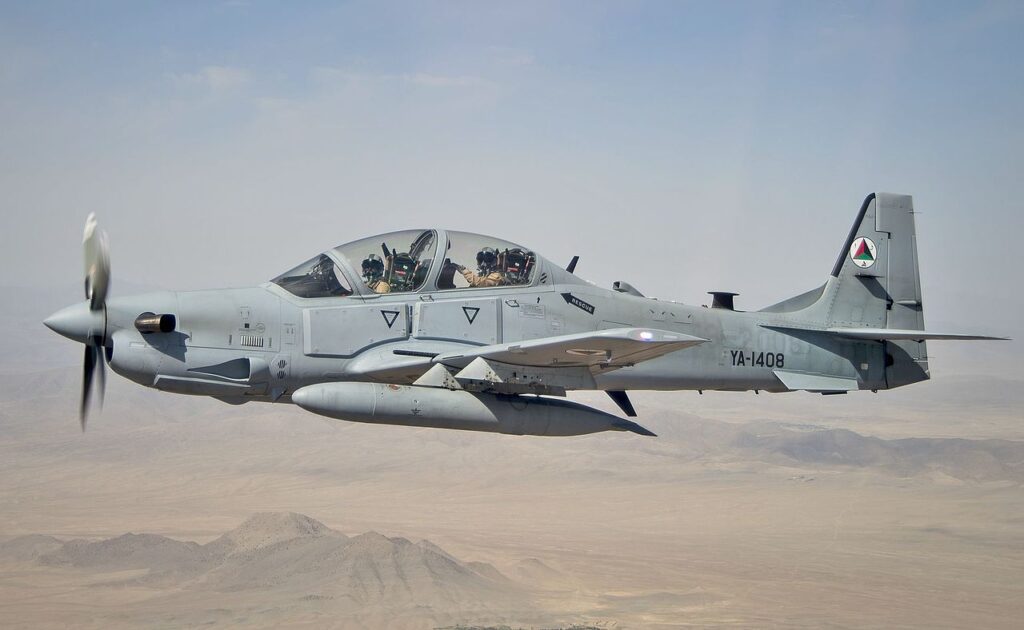By BRADLEY BOWMAN, RYAN BROBST and JARED THOMPSON

At the NATO Summit in Brussels, the United States should finalize a plan with its allies to ensure the Afghan air force has the maintenance and logistical support it requires to remain combat effective.
The United States and our international partners have worked for years to build an Afghan air force capable of providing effective air support to troops battling the Taliban, al Qaeda and the Islamic State.
Chairman of the Joint Chiefs of Staff General Mark Milley said last month that the AAF conducts “80 to 90 percent of all air strikes in support of the Afghan ground forces.” So, after the American withdrawal, “[t]he key will be the Afghan air force and their ability to continue providing close air support,” Milley predicted.
Unfortunately, despite significant progress, the AAF is not yet ready to provide the full range of air support. While it may conduct most air support now, Afghans still depend on the United States for some of the more difficult missions. An Afghan general in Kandahar warned in January that “without U.S. air support, the Taliban would gain power here.”
Once American and NATO forces withdraw it is not clear whether the United States will simply conduct independent counterterrorism strikes or provide occasional air support to Afghan ground forces. The Taliban is already making significant gains following the April 14 announcement of a U.S. withdrawal. But the Taliban offensive will gather additional momentum if they don’t have to worry about the AAF.

One critical need for the AAF is contract logistics support (CLS). Thousands of expert maintainers and logisticians keep Afghan equipment supplied by the US operational. But public statements suggest the American withdrawal will include all U.S. contractors.
This could ground much of the AAF, according to a recent report by the Department of Defense Inspector General (IG). Also, the NATO-led organization responsible for building the capacity of the AAF assesses that “without CLS support, no airframe can be sustained as combat effective for more than a few months, depending on in-country parts stocks, the maintenance capability on the particular airframe, and the timing of when CLS is withdrawn.”
Of the AAF’s roughly 143 usable aircraft and helicopters, contractors provide maintenance support for all but the 13 Russian-built Mi-17 helicopters, which the AAF is phasing out of service.
“I am concerned about the ability of the Afghan military to hold on after we leave,” Gen. Kenneth McKenzie, the head of Central Command, testified in April. He expressed specific concern about “the ability of the Afghan Air Force to fly … after we removed the support for those aircraft.”
The U.S. military has said it is developing plans to continue to provide CLS after the withdrawal, albeit remotely. Yet the IG previously found that COVID-19 restrictions on in-person interactions had affected the ability of CLS personnel to provide support to the AAF. It is unclear how remote support after the withdrawal will be more effective than remote support before the withdrawal.
Adding to the AAF’s woes are equipment overuse caused by high demand, a high attrition rate and Taliban operations designed to capture key chokepoints and frustrate military resupply efforts.
If the United States is going to end all contracts supporting the AAF, Washington should consider helping Kabul issue new contracts to do the same work. Continued U.S. funding could help pay for those contracts.
Regardless of the nature of the contracts, the bases and contractors must be safe enough to conduct their work. Given the intense Taliban offensive coming, that may be an increasingly serious concern. So, depending on the location of the AAF assets, the AAF should prepare to move aircraft and equipment from bases that are at high risk of being overrun by the Taliban.
It is worth remembering that the Taliban breached the U.S.- and U.K.-operated Camp Bastion in 2012, destroying six A/V-8B Harrier jets and damaging eight other aircraft. The United States deployed replacements for the destroyed aircraft within hours. A similar attack on the AAF would be far more devasting, and equipment would probably not be replaced rapidly, if at all.
The U.S. military may be focused on withdrawing its forces safely from Afghanistan. But a failure to provide contract support after the American withdrawal could ground much of the Afghan Air Force (AAF)—thus eroding or effectively eliminating Kabul’s greatest comparative military advantage over the Taliban. To secure America’s interests in the region, the United States should do everything it can to support the AAF. That may be one of the best hopes of preventing a Taliban takeover.
No comments:
Post a Comment